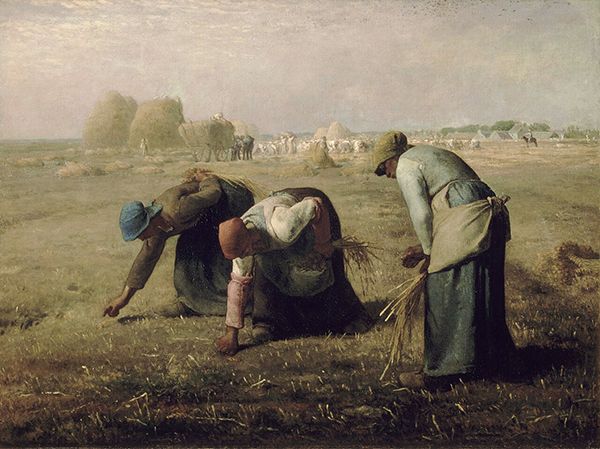JEAN-FRANÇOIS MILLET - The Gleaners
Good day everyone - the other day I showed you Millet's painting of The Angelus which was brought to our attention by our subscriber Maureen from Birchup in Central Victoria. We are looking at Millet's painting because a post we had a little while ago - Shapes and patterns: Comparing Tendai Makufa and Philippe de Kraan reminded Muareen of her time in school as she recounted: . for some strange reason the painting of the two people reminded me of the Millet paintings which were on the walls of my boarding school classroom at Sacred Heart College in Ballarat in 1963 “The Angelus” and “The Gleaners”.
If you missed out of seeing The Angelus please click here and here today for us to enjoy is Millet's The Gleaners.

The Gleaners (Des glaneuses) is an oil painting by Jean-François Millet completed in 1857.
It depicts three peasant women gleaning a field of stray stalks of wheat after the harvest. The painting is famous for featuring in a sympathetic way what were then the lowest ranks of rural society; it was received poorly by the French upper classes.
History
Millet's The Gleaners was preceded by a vertical painting of the image in 1854 and an etching in 1855. Millet unveiled The Gleaners at the Salon in 1857. It immediately drew negative criticism from the middle and upper classes, who viewed the topic with suspicion: one art critic, speaking for other Parisians, perceived in it an alarming intimation of "the scaffolds of 1793."1
And for me looking at The Gleaners reminds me of the paintings of Tendai Makufa who was one of the artists being compared in the post which started this journey.Tendai focuses his creations on the women of his birth country Zimbabwe working in the fields. We will be showcasing more of the paintings from Tendai and Philippe de Kraan in the not too distant future.
Millet was part of The Barbizon school of painters which was an art movement workig towards Realism in art, which arose in the context of the dominant Romantic Movement of the time. The Barbizon school was active roughly from 1830 through 1870. It takes its name from the village of Barbizon, France, on the edge of the Forest of Fontainebleau, where many of the artists gathered. Most of their works were landscape painting, but several of them also painted landscapes with farmworkers, and genre scenes of village life. Some of the most prominent features of this school are its tonal qualities, color, loose brushwork, and softness of form. 1
You can read more about the Barbizon School by following the bookmark link below.

Credit
1. en.wikipedia.org

